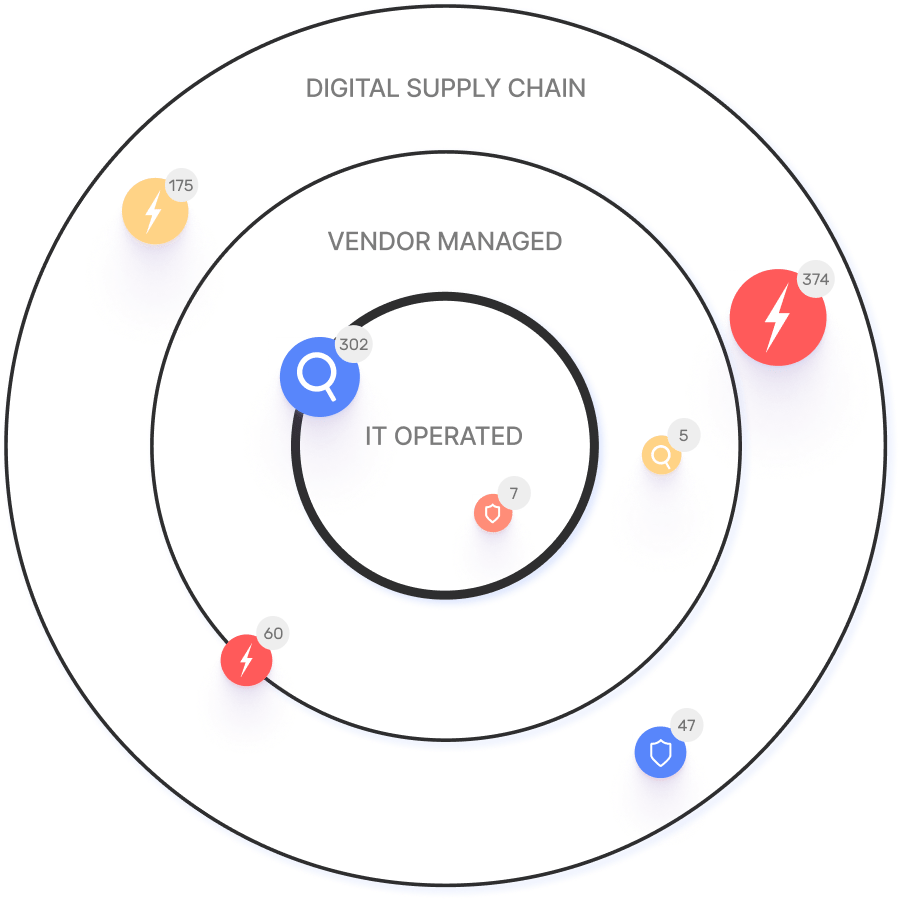Server-Side Request Forgery (SSRF): Attack Mechanics and Detection
Server-side request forgery (SSRF) attacks exploit the fact that, in certain situations, a web application may fetch a resource on a user’s behalf. If this is the case, then an attacker may use this capability to bypass defenses and exploit trust relationships.
In this article
For example, some resources within an organization’s network may be only accessible via other internal systems. If a public-facing web app contains an SSRF vulnerability, the attacker could exploit this to evade these access controls and access privileged and sensitive data.
Understanding SSRF Attack Mechanics
SSRF attacks exploit functionality that fetches a remote resource specified by the user. Examples include file uploads, webhooks, and preview generators. If the attacker provides the URL of an internal resource or one accessible to the vulnerable web app, the application may access the resource on the user’s behalf.
SSRF in Cloud Computing Environments
Cloud computing environments often mimic traditional private networks, with perimeter-based defenses that allow internal users and systems to access other resources within the cloud environment. For example, cloud-based systems and resources may be permitted to access the internal metadata service, storage buckets, databases, and other internal, private resources.
If an application hosted within the cloud environment contains an SSRF vulnerability, an attacker may be able to exploit this flaw to gain internal access within the target cloud environment. This could allow them to steal sensitive data and credentials, access other systems within the cloud deployment, and manipulate the organization’s cloud resources.
SSRF Bypass Techniques
Often, web applications will have security controls in place to protect against SSRF attacks. For example, the organization may have implemented an allowlist or blocklist to specify the domains or IP addresses that an application is permitted to fetch resources from.
However, these controls may not be effective if an attacker identifies a way to trick and bypass them. Some common techniques include:
- Encoding: An allowlist or blocklist may look for a particular domain, IP address, or word within the target URL. Encoding algorithms can conceal this information against a check dependent on simple string matching.
- Alternative Representations: IPv4 addresses are commonly written like 127.0.0.1, and allowlists or blocklists may assume that this is the representation used. However, addresses can also be written in other formats (such as hexadecimal or octal) to evade these controls.
- Redirections: An attacker may implement redirect chains or DNS rebinding to change the intended destination of a URL. If successful, this may allow a URL to pass an allowlist but point to a disallowed webpage.
- Uncommon URL Schemes: In addition to common URL schemes like http:// and ftp://, there are also various, less common ones like file://. Using these may permit an attacker to modify a URL sufficiently to evade a blocklist.
- Misconfigured Systems: An organization’s internal network may allow open redirects and contain misconfigured proxies. If so, an attacker can exploit this to change the final destination of a request.
Internal Resource Exposure via SSRF
SSRF vulnerabilities are dangerous because they can potentially allow an attacker to access anything with a URL. Some examples include:
- Internal apps and services
- Internal REST APIs
- Web-based admin panels
- Cloud metadata endpoints
- Sensitive files (via file://)
By exploiting these vulnerabilities, an attacker may be able to access sensitive data, escalate their privileges, and interact with internal systems with privileged functionality or access to sensitive internal data.
SSRF Detection and Testing
SSRF vulnerabilities are a major security risk that can lead to data breaches, data loss, and other negative outcomes. Some methods for identifying these vulnerabilities in a web application include:
- Code Analysis: SSRF vulnerabilities can exist in application code that makes external requests on the user’s behalf. Code implementing file uploads, webhooks, and similar functionality should be scrutinized for potential vulnerabilities and have controls in place.
- Security Testing Tools: SSRF vulnerabilities appear in an application’s source code and its behavior during testing. As a result, both static and dynamic application security testing (SAST/DAST) tools can aid in vulnerability detection.
- Red Teaming: SSRF vulnerabilities are most dangerous when an attacker can use them to access internal systems. Testing processes should include passing internal IP addresses to the system and verifying that requests are denied.
- Traffic Monitoring: A successful SSRF exploit involves a web application making requests to unusual and potentially dangerous URLs. An intrusion detection system (IDS) can detect and alert on attempted exploitation of these vulnerabilities.
Securing Web Applications with IONIX
SSRF attacks are a significant threat that arises from vulnerable processes where an application makes requests to user-provided URLs. While these types of functions are necessary in some cases, such as webhooks or file uploads, they also need to have controls in place to identify and block attempted exploitation.
The IONIX platform helps organizations to achieve visibility into and control over these and other potential vulnerabilities within their systems. Via continuous monitoring and simulated attacks targeting common vulnerabilities, IONIX helps a business identify and fix the vulnerabilities that are most likely to be exploited by an attacker. To learn more about how to reduce your digital attack surface with IONIX, sign up for a demo.



